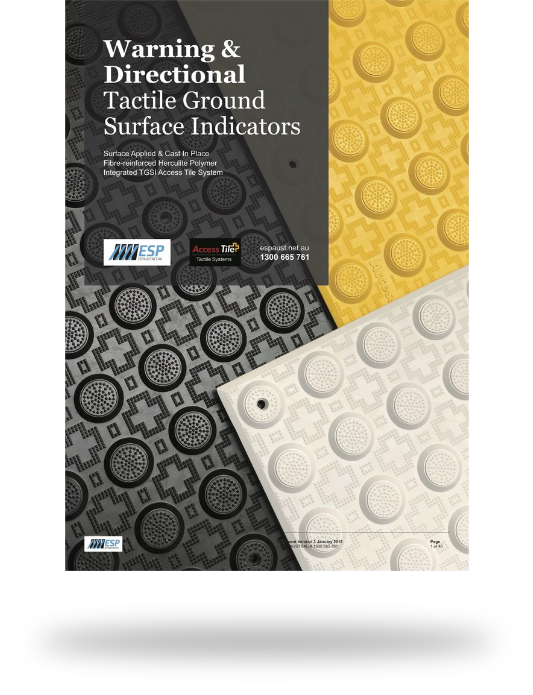Understanding Tactile Ground Surface Indicator’s


At ESP, we have made it a goal of ours to provide safety products that deliver long term value for all users. Our industry leading range of Access® Tile Tactile Ground Surface Indicator’s are the result of extensive testing and development, premium compounds and materials, real construction ‘know-how’ and an unwavering commitment to excellence.
Supporting Australian Councils, Civil Contractors, Education departments and Building professionals we aim to improve accessibility in the built environment for all users.
Below is a quick guide to help understand Tactile Ground Surface Indicator’s and their applications.
What are Tactile Ground Surface Indicators?
Tactile Ground Surface Indicators are truncated cones and/or bars installed on the ground or floor surface to provide cues, which, when combined with other environmental information, guide and assist people who are blind or vision-impaired with warning or directional orientation information.
Category Types Available
Warning – Also known as ‘Hazard’ Tactile Ground Surface Indicator’s, are truncated domes designed to warn a pedestrian of a hazard ahead, such as:
- At a kerb ramp to warn where the footpath ends and the road crossing point begins.
- At a ramp or ramp landing to warn of the change in grade.
- At steps, stairs, escalators and at a change in direction on the footpath which includes directional Tactile Ground Surface Indicators.

Directional – A series of raised bars aligned to advise pedestrians of the direction of travel to a facility or point of service. They are installed:
- To give directional orientation to crossing points at intersections where the footpath width is greater than 3m distance measured from the property boundary to the top of the kerb ramp.
- To give directional orientation to kerb ramp crossing points within a raised traffic island.
- To give directional orientation across an open area.
- To give directional orientation to alert pedestrians of mid-block crossing points and at bus stops or tram/light rail stops.
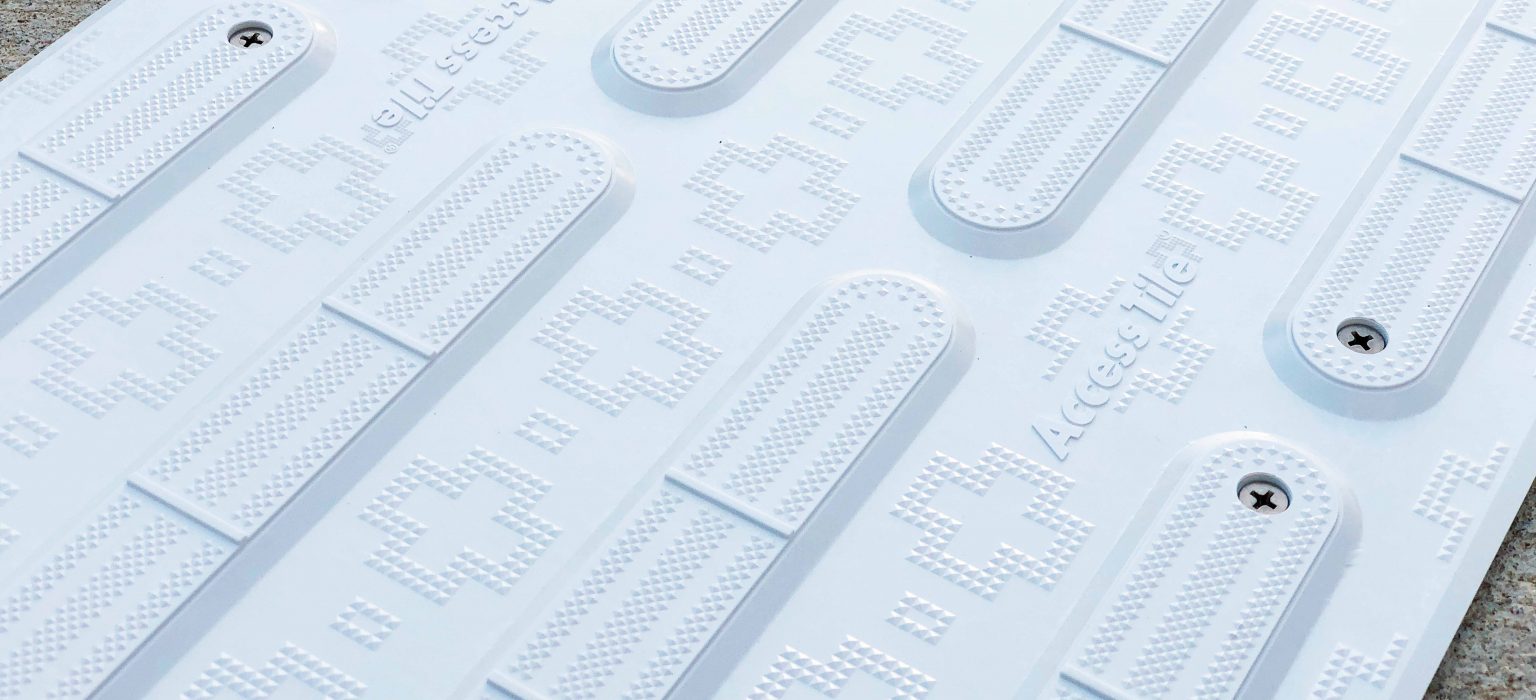
Directional TGSI’s are installed either:
- With a single row of tiles (i.e 300mm wide) in the direction of travel between a “change of direction” plate and the top of a kerb ramp leading to a crossing point at an intersection or traffic island.
- With 2 rows of tiles (i.e. 600mm wide) across a continuing footway to alert people following the building line of a change of direction to a mid-block crossing point, bus stop or tram / rail stop. Note: The width of the TGSI’s ensures that the indicators will be detected as the typical width of a person’s step is generally less than 600mm.
ESP’s Surface Applied Access® Tile
ESP’s Surface Applied Access® Tile can be mechanically and chemically secured to any stable surface. They are fast to install, simple to retrofit and withstand the toughest pedestrian use.
WARNING / HAZARD
300x600mm (White, Yellow & Black)



600x1200mm (White, Yellow & Black)



DIRECTIONAL
300x600mm (White, Yellow & Black)

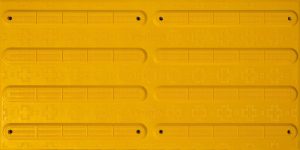

ESP’s Cast In Place Access® Tile
ESP’s Cast In Place Access® Tile is applied during the curing of wet concrete. When the concrete becomes cured, the ESP Access® Tile is mechanically fixed to the finished substrate and is immediately trafficable.
WARNING / HAZARD
300x600mm (White, Yellow & Black)

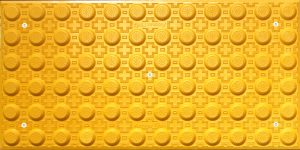

600x1200mm (White, Yellow & Black)

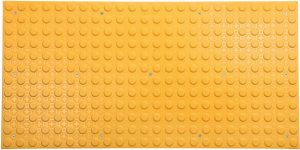
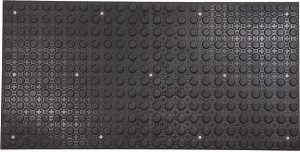
DIRECTIONAL
300x600mm (White, Yellow & Black)



Application of Tactile Ground Surface Indicators – Where must they be used?
According to Australian & New Zealand Standard AS/NZS 1428.4.1:2009 Design for Access and Mobility Part 4.1 – Means to Assist the orientation of people with vision impairment – TGSI’s, TGSI’s should be used as a ‘minimum’ in the following situations:
- Stairs & Stair Landings
- Escalators & Travellators
- Pedestrian Ramps
- Overhead Hazards (Including potential obstructions wall protruding fixtures)
- Carriageways without kerbs (I.e. that intersect at the same grade)
- Railway, Tramway and light rail pedestrian – (Waiting platforms and level crossings)
- Waterbodies – (Wharves, lakes and ponds accessible by pedestrians)

Luminance Contrast (TGSI’s)
Luminance Reflectance Value (LRV) is a measurement of the amount of light reflected from a surface. To comply with Australian Standards, TGSI installations must achieve a minimum Luminance Contrast between the TGSI and the surrounding substrate.
Tactile Ground Surface Indicators must achieve the following contrasts:
- 30% – Integrated Tiles (Such as ESP’s Access® Tile)
- 45% – Discreet (Individual TGSI’s)
- 60% – Composite Discreet (Individual TGSI’s usually with a different colour insert)
Now offering in-house testing, Contact Us today for LRV requirements to ensure your project meets Australian Code & Compliance.




 Next Article
Next Article





